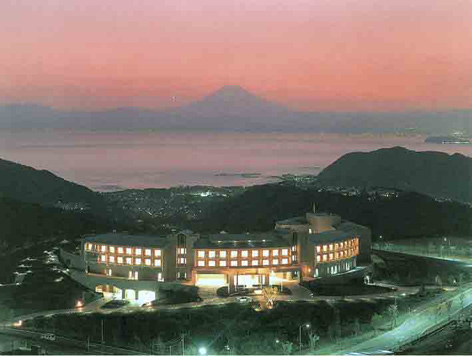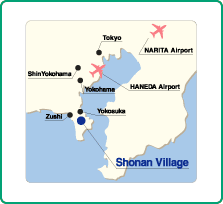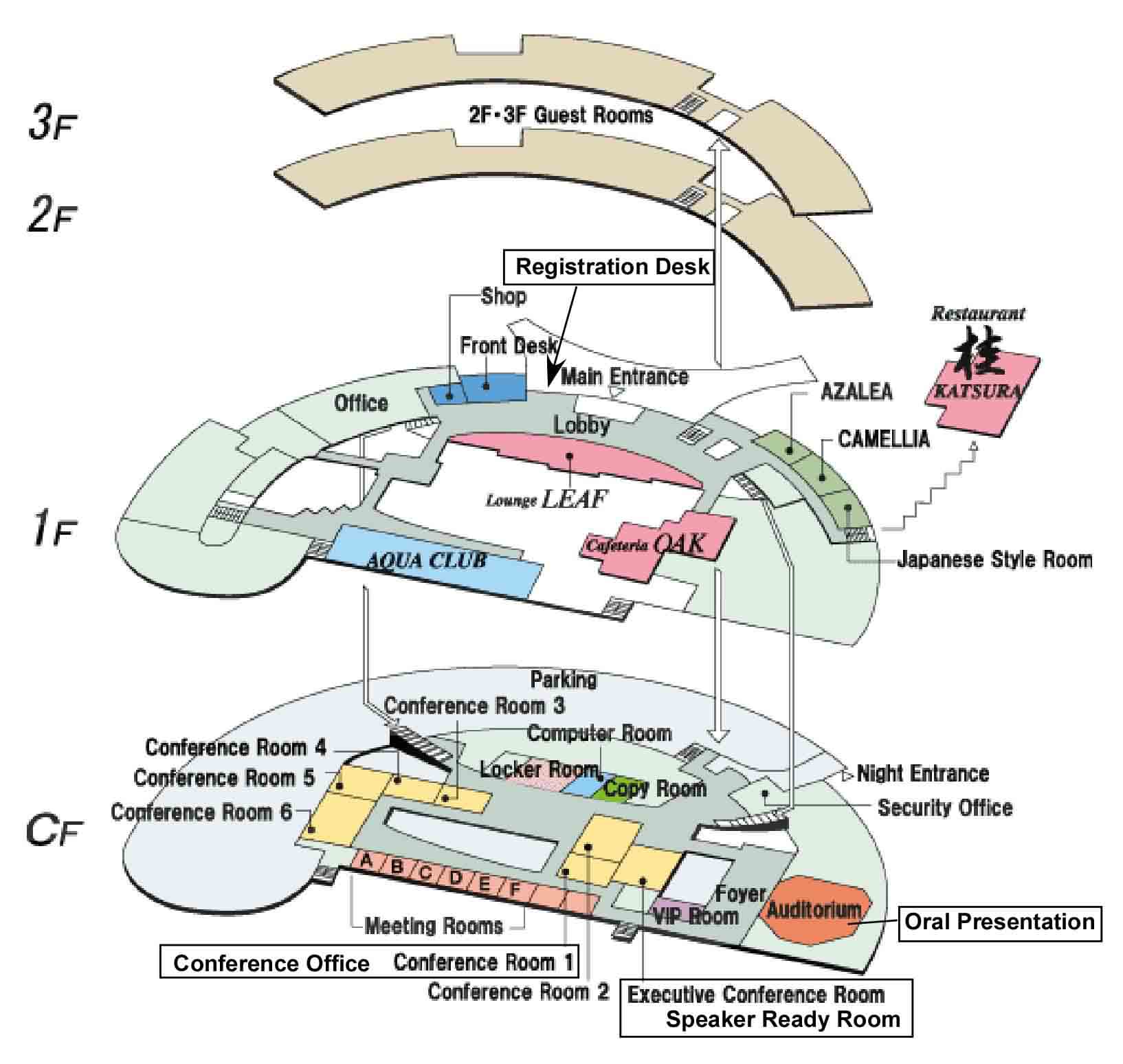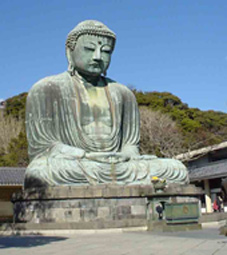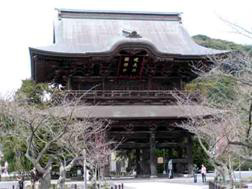*Registration includes: abstract volume; participation in all sessions;
twice-daily coffee-breaks;
social events (e.g. icebreaker and a half-day trip) and shuttle from nearest
railway station (Zushi Station) to Conference center.
Accommodation registration
Accommodation registration is over. Limited number of rooms is available.
Please ask to Seismix 2006 staff by e-mail. E-mail address: hanzawa@shonan-village.co.jp
Excursion registration
Cost of the excursion is 50,000 JPY. It includes transportation, hotel
accommodation, field guide, and most meals. We can accept small number
of participants. Please ask to Seismix 2006 staff by e-mail. E-mail address:
hanzawa@shonan-village.co.jp
Post-symposium Field Excursion: (Saturday, September 30 - Monday, October
2)
Active Tectonics in the Izu-Tanzanwa Collision Zone
The Izu-Bonin Arc on the Philippine Sea Plate is now colliding against
the Honshu Arc on the Eurasian Plate, forming the Izu-Tanzawa Collision
Zone several tens of kilometers west of Hayama. The vigorous tectonic activities
in this zone are represented by fault movements, volcanisms, and seismicities
at present. It has also created spectacular landforms there. We will visit
several areas to observe and discuss these tectonic features, using recent
seismic reflection/refraction studies. Schedule of field excursion, click here

LOGISTICAL AND ADMINISTRATIVE INFORMATION
Registration and Check-in
The registration office will be allocated at the Hotel reception. Check-in
will be available from Sunday 24th at 15:00.
Procedure of Registration and Methods of Payment
Registration and payment will be carried out by following steps.
1. Do the online-registration at the registration site.
2. After finishing the online-registration, you will receive confirmation
by e-mail as an automatic replay.
3. Within 10 days, you will receive another confirmation e-mail from the
symposium staff, informing the total amount of your payment.
4. Please send a fax your credit card form, including your credit card
information. The symposium organizers accept only payments in Japanese
yen (JPY) by Visa, Mater Card or American Express.
Down load Credit card form (pdf file), click here .
5.The symposium organizers will charge your credit card.
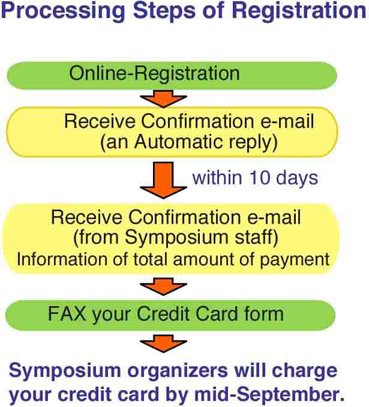
Cancellations and refunds
Registration fees will only be refunded if the notice of cancellation is
received in writing before the registration deadline (June 23). Refunds
for cancellation requests received in writing after June 23 will be determined
based on whether your room/board package can be resold. In any event, the
cancellation fee is 10,000 JPY to cover commitments entered by the Organizing
Committee on your behalf. No refunds will be made for cancellation request
received after August 23.
Travel to/from the symposium
Detailed explanation, click here (pdf file 12.4MB).
By JR Sobu-Yokosuka Line Rapid Train('Airport Narita' ). Get off at Zushi
Station. (2 hours 30 mins. approx. from Narita Airport).
By JR Narita Express. Change at Yokohama Station to JR Yokosuka Line. Get
off at Zushi Station (2 hours approx. from Narita Airport).
From JR Zushi Station take Keikyu Bus (No. 16). Get off at Shonan Kokusaimura
Center Mae. (30 mins. approx.). The organizing committee will arrange shuttle
bus from nearest railway station (Zushi Station) to Conference center.
Detailed information of the transportation from Narita Airport to the conference
center will be uploaded before the symposium.
Travel information is available from this URL.
http://www.shonan-village.co.jp/english/link_index.html
HEALTH INSURANCE
Emergency medical care of Japan is very expensive. Therefore we strongly
recommend you to purchase traveler's health insurance before coming to
Japan.
NEXT AND FUTURE MEETINGS
Scientists willing to host the 13th or later International Symposium on Deep Seismic Profiling in 2008 must communicate their interest, with estimated costs, to the Organizing Committee before the evening of Monday September 25, at the 12th Symposium. An announcement will be made at the Symposium Dinner.
SPONSORS
We acknowledge with thanks the financial support of:
Japan Society for the Promotion of Science,
InterMARGINS,
Earthquake Research Institute, the University of Tokyo (ERI)
Japan Agency for Marine-Earth Science and Technology (JAMSTEC)
National Research Institute for Earth Science and Disaster Prevention (NIED)
International Geoscience Programme (IGCP) 474
Ministry of Science, Culture and Sport, Japan
The Graduate University for Advanced Studies
Tokio Marine Kagami Memorial Foundation
Yokosuka City
Japan Petroleum Exploration Co., Ltd.
Teikoku Oil Co., Ltd.
JGI, Inc.
Kawasaki Geological Engineering Co. Ltd.
Japan Continental Shelf Survey Co.Ltd.
Hanshin Geological Engineering Co. Ltd.
Obayashi Corporation, Technical Research Institute
Hakusan Corporation
*Financial support from the IGCP 474 was spent for discount the registration
fee of students and for the support of travelling cost of invited presenters
in the Classic Transect session.
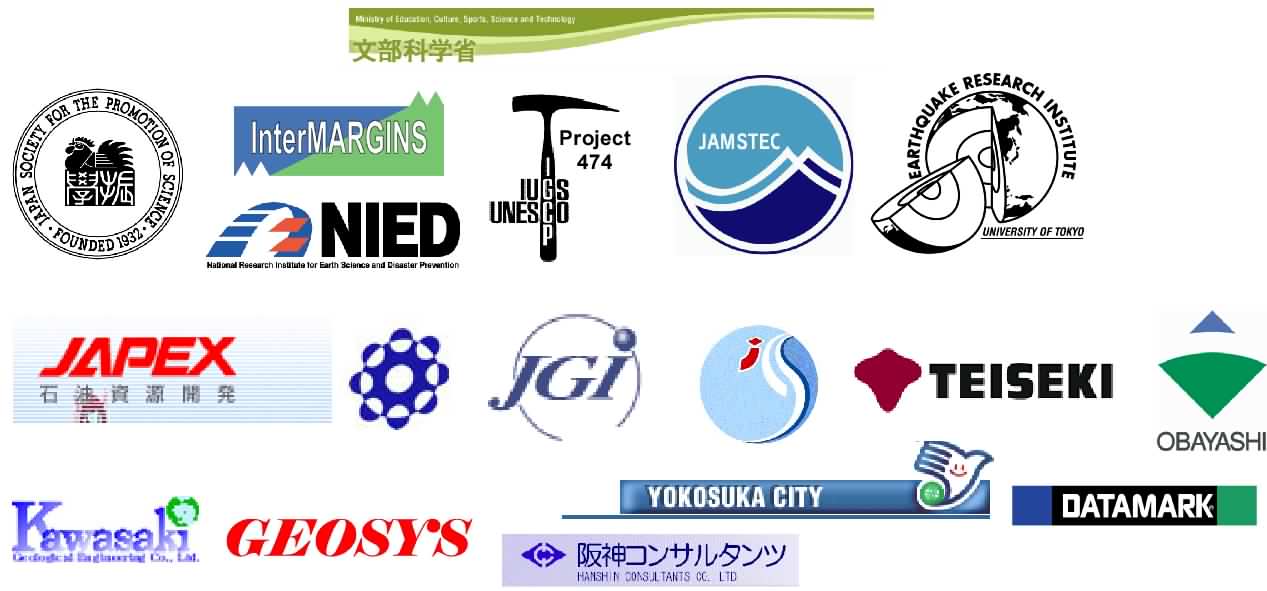
We acknowledge with thanks the sponsorship of our scientific program by:
International Association of Seismology and Physics of the Earth's Interior
(IASPEI)
International Lithosphere Program (ILP)
Japan Geoscience Union
Seismological Society of Japan
Geological Society of Japan

ORGANIZING COMMITTEE
Contact address: seismix2006@eri.u-tokyo.ac.jp
Takaya Iwasaki (Chair: Earthquake Research Institute, The University of
Tokyo)
1-1-1 Yayoi, Bunkyo-ku, Tokyo 113-0032, Japan iwasaki@eri.u-tokyo.ac.jp,
Tel. +81(3)5841 5708; fax +81(3)5689 7234
Yoshiyuki Kaneda (Vice Chair: Japan Agency for Marine-Earth Science and
Technology)
Tanio Ito (Vice Chair: Chiba University)
Hiroshi Sato (Secretary in general: ERI, The University of Tokyo)
Shuichi Kodaiara, Narumi Takahashi (Japan Agency for Marine-Earth Science
and Technology)
Takashi Iidaka, Naoko Kato (ERI, The University of Tokyo)
Kiyoshi Ito (Kyoto University)
Masaki Kanao (National Institute of Polar Research)
Takanobu Yokokura (National Institute of Advanced Industrial Science and
Technology)
Keiji Kasahara (National Institute for Earth Science and Disaster Prevention)
Secretariat
Yuko Izaki (Secretary: ERI, The Univ. of Tokyo) °°°°
Sumiko Ogino (Web design, The Univ. of Tokyo) °°°°°°
Advisory Committee
Mizuho Ishida* (National Institute for Earth Science and Disaster Prevention)
*Present affiliation JAMSTEC
Kiyoshi Suyehiro (Japan Agency for Marine-Earth Science and Technology)
Naoshi Hirata (ERI, The University of Tokyo)
Takeshi Ikawa (GEOSYS, Inc)
Youichi Ohta (Japan Petroleum Exploration Co., Ltd)
Isao Akiyama (Teikoku Oil Co., Ltd)
Masanori Saito (OYO Corporation)
Youichi Norisugi (Japan Oil, Gas and Metals National Corporation)
Yutaka Aoki (JGI, Inc)
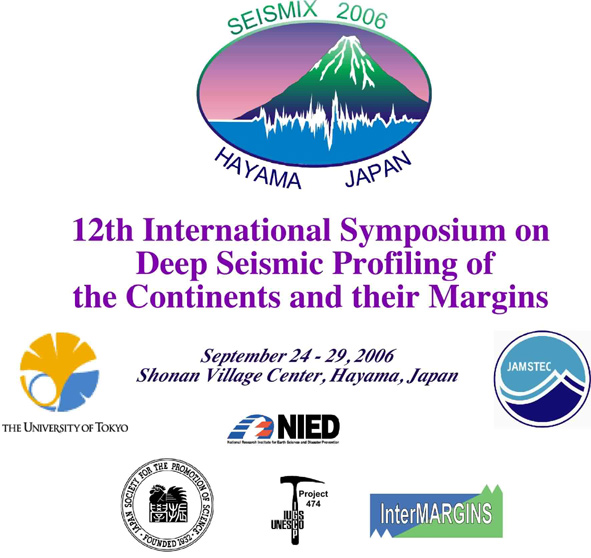

![]() 3rd Circular PDF version, click here (4.71MB)
3rd Circular PDF version, click here (4.71MB)![]()
![]() click here(12.4MB)
click here(12.4MB) ![]()
![]() 2nd Circular PDF version (4.8 MB), click here.
2nd Circular PDF version (4.8 MB), click here.